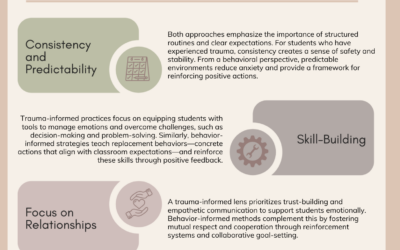Running small group instruction in the best situation can be challenging but what about when you don’t have the best situation?
- There’s not enough staff to run each group
- You have students with varied skills and abilities
- There are student behaviors that pull you away on a regular basis
- Your days get interrupted by students coming in and out on a regular basis
Do any of these sound familiar? If your answer is yes, check out these 5-steps to start running your small groups like a PRO!
1. Schedule your small group instruction time
The first step to running successful small groups is to set a clear and consistent schedule for when you run your small groups. When planning your schedule, consider the following;
- When are your students most able to access the content you’ll be covering?
- What time of the day will your students be most successful with some independent learning?
- Which time of the day works best for your schedule?
- What time of the day is most likely to NOT have a lot of interruptions?
2. Assess students to determine their current ability levels
There is no quicker way for your small groups to fail than to have students with too big of a difference in skill levels. Assessing from the beginning and along the way is the best way to avoid this pitfall. There will always be outliers- don’t panic!
Two helpful hints in that situation are:
- Set up a buddy system so that if a student needs help, they have a buddy to go to first.
- Make sure the materials you have at each rotation include enough options for students to complete at different levels. An example of this is at a writing rotation, there are opportunities that range all the way from complex writing to simple sentences depending on the skill level of the student.
3. Plan and set up your small groups
This is the “meat and potatoes” step of the plan. The groups totally depend on what you are teaching and what you need to cover. You may set up small group rotations during one content area and cover different parts of that content area. An example of that would be reading rotations. You could have one fluency small group, one comprehension small group, and one high-interest reading group. You may also do multiple content areas during your small groups. For example, you may do a math group, a reading group, and a writing group. (check out these tips to make small group instruction the best part of your day!)
4. Make sure you have a STRONG behavior/classroom management system that focuses on the behaviors you need for your small groups to run smoothly.
This is CRITICAL!! Before you even start your groups, you will want clear rules, procedures and reinforcement prepared and practiced. Remember, every new skill needs to be taught, practiced, and reinforced. Check out part-2 for lots of ideas on what rules and procedures to teach and how to use reinforcement to ensure successful small groups.
5. Re-evaluate and change as needed
No plan is ever perfect right out of the gate. That DOES not mean that it can’t work. It just means that plans need to be changed along the way as we learn more. I recommend trying for 2-weeks before making any changes. It takes that amount of time to really see what is working and what isn’t.
Small group rotations can be an amazing tool for teachers to use but they don’t just happen overnight. They take planning, preparation and practice. Don’t give up if they don’t go how you want them to from the start!
For more support, visit my Shop for Courses, Memberships and Mentorships.





